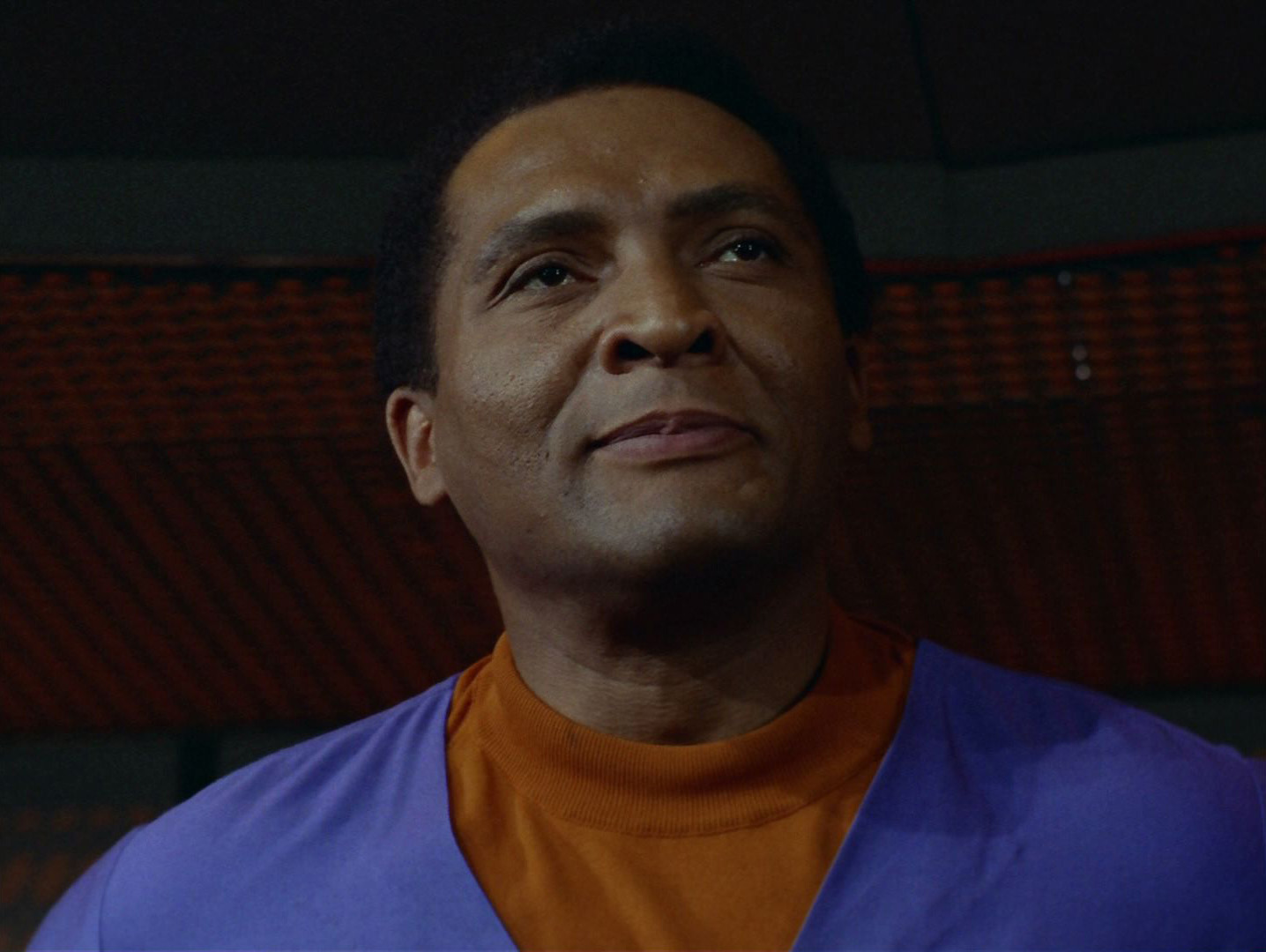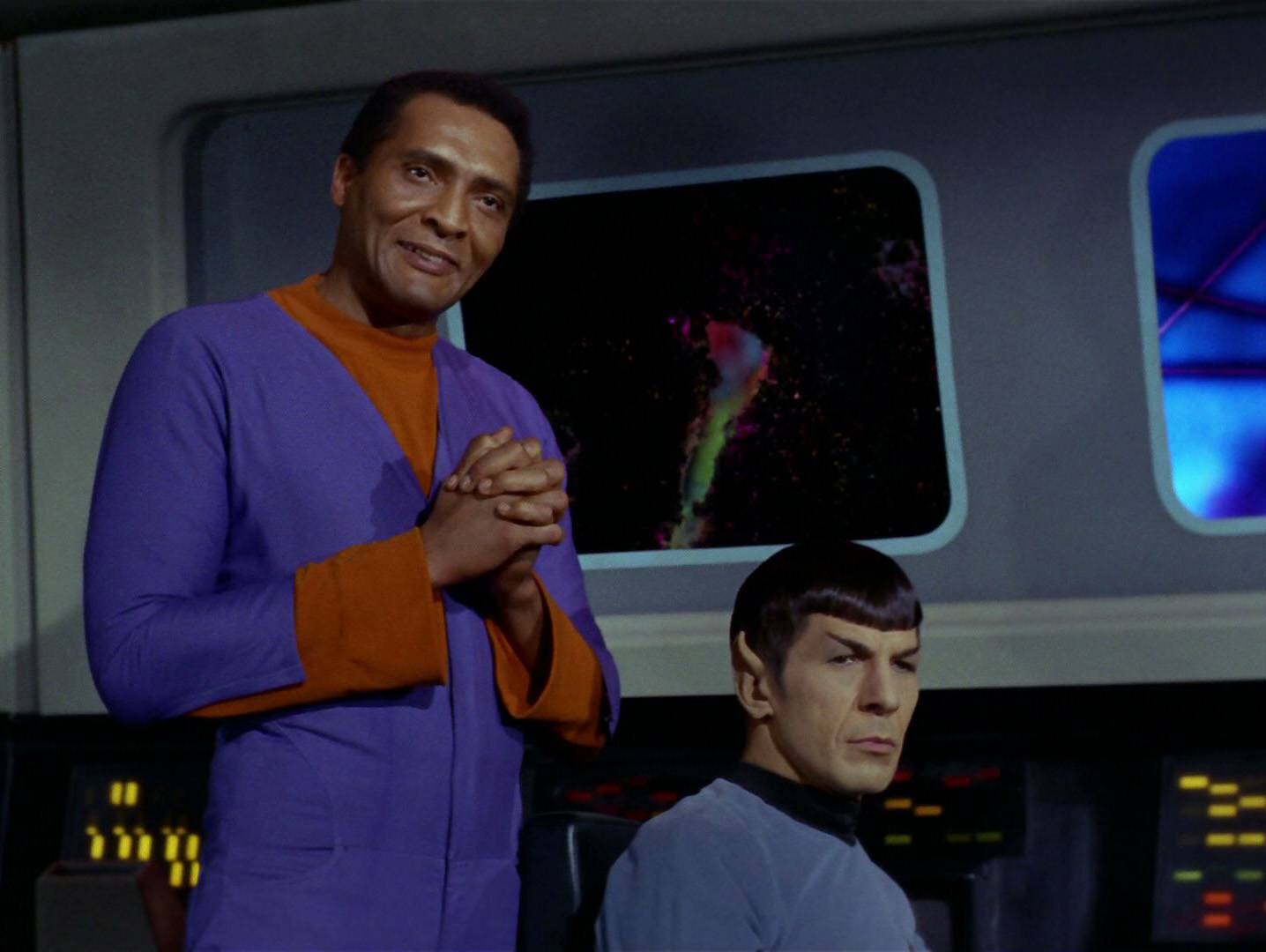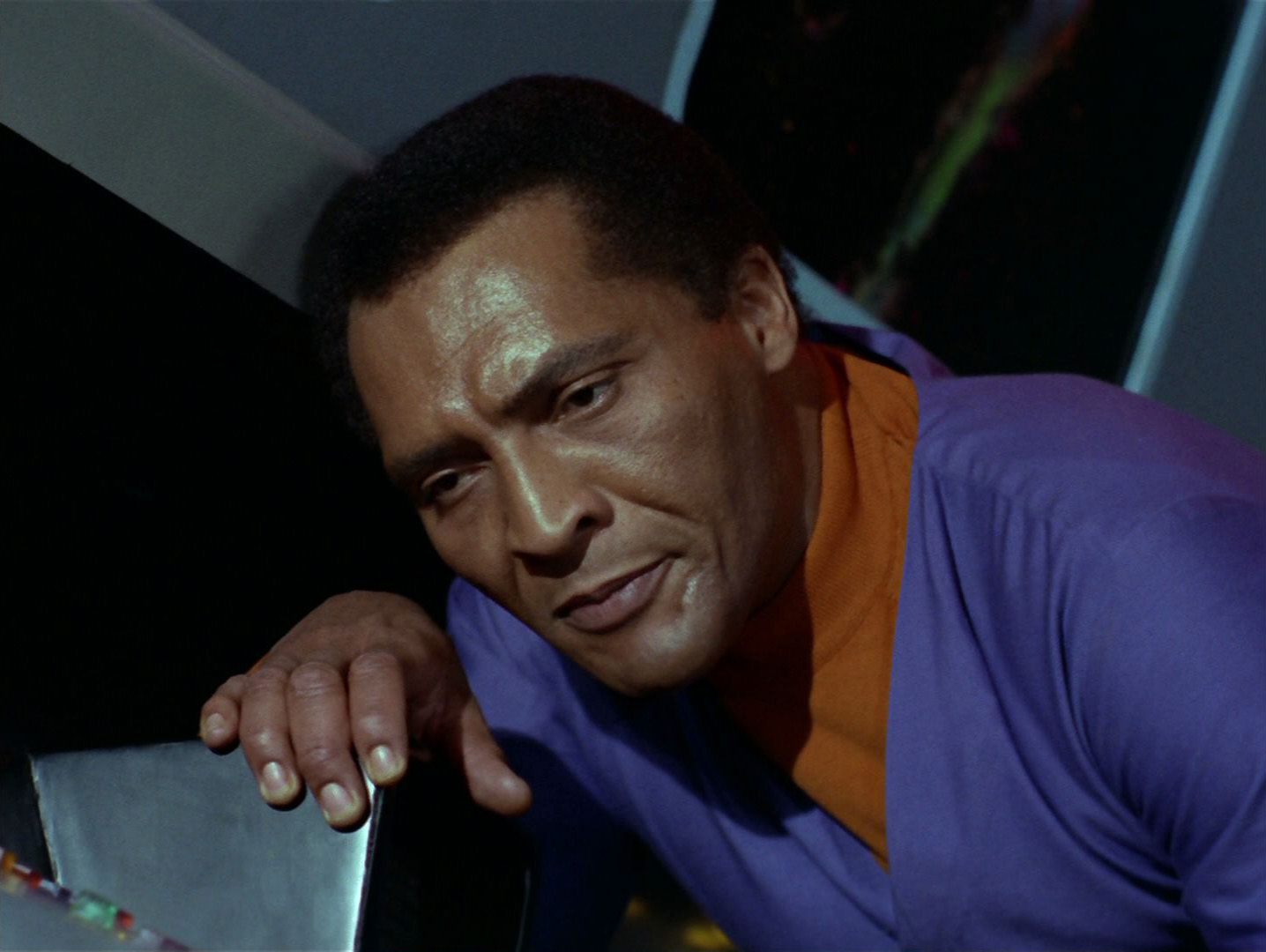Welcome to Black History Month at Women At Warp! This is an installment of our month-long celebration of Starfleet officers and the adjacent personnel who are members of the Cosmic African Diaspora. These officers are curated in chronological order in an attempt to illustrate how their contributions have influenced humanity’s presence in the galaxy.
Most of the technology included in Star Trek lore has had tremendous impact in our everyday life. From intercoms to laptop computers, there are countless examples of how theoretical devices had enough of an effect on popular culture to eventually become daily, household appliances. If we compare the average PC with E.N.I.A.C, the earliest known computer, the advancements have been boundless. If we consider the brilliance of Trek computer science, we’d be remiss if we neglected to mention its architect, Dr. Richard Daystrom (William Marshall).
Born in 2219, Daystron showed early brilliance in the computer sciences. By the age of 24 he had received numerous prestigious awards for creating the duotronic systems used in Starfleet starships. His work laid the foundation for further progress, including isolinear circuitry used in the 24th century. Though he displayed outward genius beyond his years, young Daystrom suffered ridicule from his peers before they appropriated his research to build their own systems upon.
Daystrom spent the next 20+ years back at the drawing board, enduring more scrutiny and professional disrespect from colleagues as he attempted to continue his work. After developing a multitronic system, he was given the USS Enterprise to test the effectiveness of its computing during war games. The system ultimately proved a failure despite Dr. Daystrom’s ingenuity. Though he brilliantly assigned his own personality engrams into the new multitronic system, it ended up being the sheer magnitude of that brilliance that befell him.
In theory, Daystrom’s multitronic system, or M-5, was designed to remove humanity from the dangers of space exploration. It was meant to prevent a human being from having to make difficult space-faring ethical decisions, like ignoring a war-torn civilization to adhere to the Prime Directive, so that humans could focus on scientific progression guilt-free instead. In theory, it would enable exploration of environments perilous to organic life, participate in combat with no risk of casualties, and a myriad of other threats to explorers to ensure the safety of future generations.
The revelation of M-5’s potential stirred some brutally honest moments from Kirk. In those moments, he began to weigh his pride and ego against the possibility that his role as a Starfleet captain was rapidly growing obsolete. If Daystrom had programmed the M-5 to consider perspectives outside of his own, the events that followed could have been avoided. Ultimately Kirk and the crew of the Enterprise managed to disable the system, but the victory was not without casualties.
Daystrom suffered a nervous breakdown and was committed to a rehabilitation facility on the heels of this failed test. It didn’t help that as he was attempting to solve the problem, Kirk frequently became unnecessarily physical with the older, and much taller, scientist. Full disclosure: the visuals of these unprovoked attacks can be difficult to watch, especially when you consider the fact that Daystrom was professional and respectful to a crew (albeit a bit curt, at times), that was outwardly hostile towards him. Unlike his technological predecessor, Dr. Emory Erickson, Dr. Daystrom was upfront and honest about the intentions of his invention, and the argument could be made that being physically accosted wasn’t necessary.
Fortunately, his mental duress was met with medical care and not armed force. In fact, he was remembered fondly throughout Trek history. His legacy was established in the Daystrom Award for Scientific Achievement, and the prestigious Daystrom Institute of Technology, both of which cited time and again throughout Trek lore as honors of excellence. Kind of like how Dr. King was considered a terrorist during the Civil Rights movement and lauded with honors after his assassination…
We must note the cultural significance of the portrayal of Daystrom by William Marshal. A classically trained orator and operatic bass vocalist, Marshall was an iconic influence on the stage and screens both big and small. His career spanned genres of entertainment, and commanded a presence that effortlessly dwarfed anyone in his orbit. By appearing on Star Trek in the immediate wake of the Civil Rights movement, Marshall’s portrayal of a brilliant yet tortured scientist impacted a great deal of Black viewers, inspiring many to pursue innovative careers in computer engineering and information technology. Seeing Daystrom collapse as he did may be difficult content to consume, but it serves as a reminder that human beings are complex, nuanced individuals, no matter how high their IQ may be.



I would have to agree with Dr. Daystrom’s final analysis